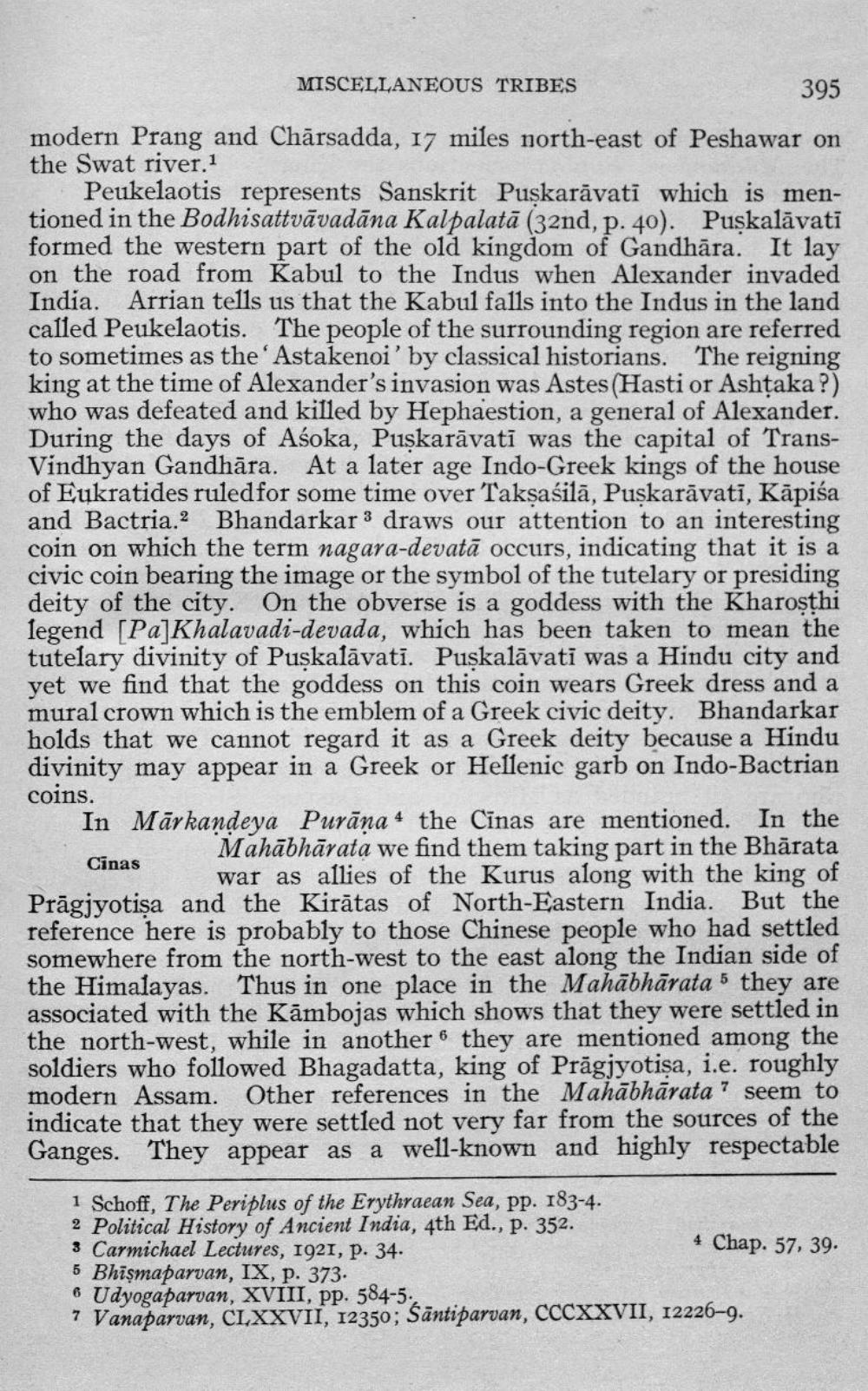________________
MISCELLANEOUS TRIBES
395 modern Prang and Chārsadda, 17 miles north-east of Peshawar on the Swat river.1
Peukelaotis represents Sanskrit Puskarāvati which is mentioned in the Bodhisattvāvadāna Kalpalatā (32nd, p. 40). Puskalāvati formed the western part of the old kingdom of Gandhāra. It lay on the road from Kabul to the Indus when Alexander invaded India. Arrian tells us that the Kabul falls into the Indus in the land called Peukelaotis. The people of the surrounding region are referred to sometimes as the 'Astakenoi' by classical historians. The reigning king at the time of Alexander's invasion was Astes (Hasti or Ashtaka?) who was defeated and killed by Hephaestion, a general of Alexander. During the days of Asoka, Puskarāvati was the capital of TransVindhyan Gandhāra. At a later age Indo-Greek kings of the house of Eukratides ruled for some time over Taksasilā, Puskarāvati, Kāpisa and Bactria.2 Bhandarkar 3 draws our attention to an interesting coin on which the term nagara-devatā occurs, indicating that it is a civic coin bearing the image or the symbol of the tutelary or presiding deity of the city. On the obverse is a goddess with the Kharoșthi legend [Pa]Khalavadi-devada, which has been taken to mean the tutelary divinity of Puskalāvati. Puskalāvati was a Hindu city and yet we find that the goddess on this coin wears Greek dress and a mural crown which is the emblem of a Greek civic deity. Bhandarkar holds that we cannot regard it as a Greek deity because a Hindu divinity may appear in a Greek or Hellenic garb on Indo-Bactrian coins. In Mārkandeya Purāna 4 the Cinas are mentioned. In the
Mahābhārata we find them taking part in the Bhārata Cinas
as war as allies of the Kurus along with the king of Prāgjyotisa and the Kirātas of North-Eastern India. But the reference here is probably to those Chinese people who had settled somewhere from the north-west to the east along the Indian side of the Himalayas. Thus in one place in the Mahābhārata 5 they are associated with the Kāmbojas which shows that they were settled in the north-west, while in another 6 they are mentioned among the soldiers who followed Bhagadatta, king of Prāgjyotisa, i.e. roughly modern Assam. Other references in the Mahābhārata ? seem to indicate that they were settled not very far from the sources of the Ganges. They appear as a well-known and highly respectable
1 Schoff, The Periplus of the Erythraean Sea, pp. 183-4. 2 Political History of Ancient India, 4th Ed., p. 352. 3 Carmichael Lectures, 1921, p. 34.
4 Chap. 57, 39. 5 Bhismaparvan, IX, p. 373. 6 Udyogaparvan, XVIII, pp. 584-5., 7 Vanaparvan, CLXXVII, 12350; śāntiparvan, CCCXXVII, 12226-9.




